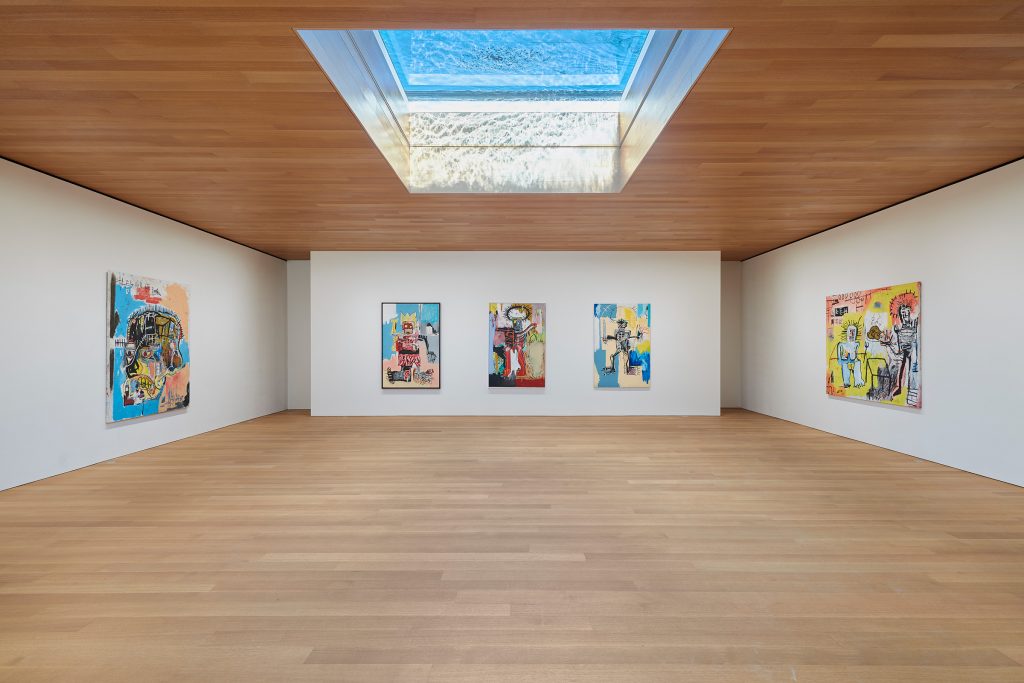David Hochbaum: Village in a Can
A collection of miniature, hand-painted wooden houses crafted from homemade frame remnants

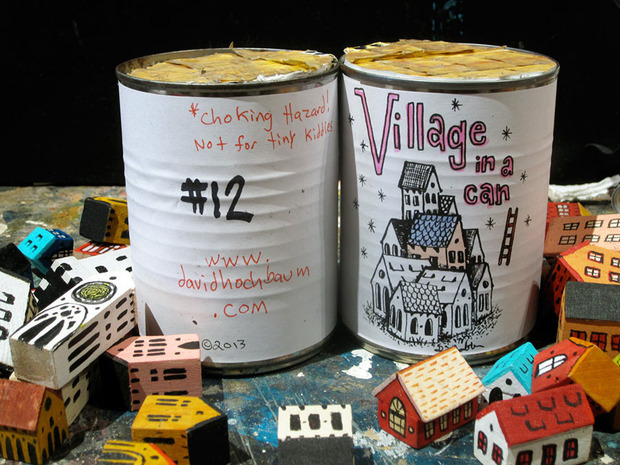
It has been frequently noted that there’s magic in miniature gifts. It’s no different with New York-based artist David Hochbaum‘s “Village in a Can.” A handmade, ornately painted collection of 11 pieces per can, all are born of the remnants of his large-scale paintings and installation work. The artist explains that he “began saving all the scrap and cut off wood from the construction of frames I make for my work. I like the way the mitre cuts made these roof-shaped pieces and since I love to make houses of all sizes, I decided to start making tiny ones.” Each little house is vibrant, unique and hand-signed, not to mention made entirely out of salvaged or repurposed products. In addition to being miniature homes, they are miniature pieces of art.
Every piece bears evidence of the hands that made them. “I glue and hand-cut all the pieces and then hand-paint each one so they’re all one-of-a-kind and unique pieces,” says Hochbaum. In that process, he has developed a polished rawness, reminiscent of the way the homes of our imagination are composed. Hochbaum notes that he tends to get obsessive over them; painting for days, wondering how many he can get done. That said, he also uses the process as a reprieve or “as a way of breaking out of the habits” he forms when investing time and energy into his larger-scale works.
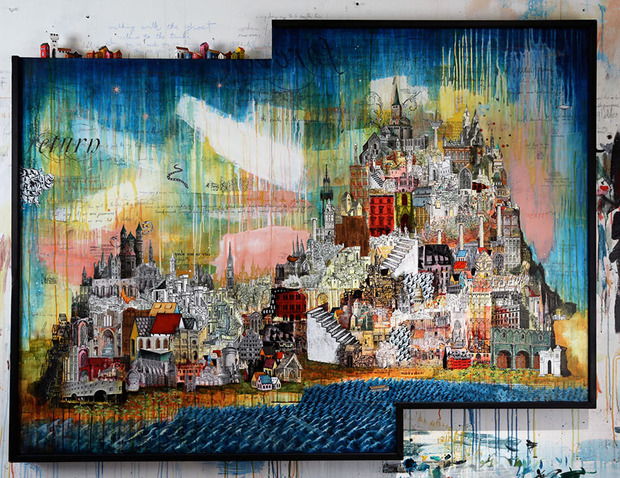
Houses and homes manifest across most of Hochbaum’s work, something he attributes to inspirations from Pieter Bruegel’s “Tower of Babel.” His cityscape, solid yet elaborate paintings, reference this. He describes the influence as begetting “shadow boxes of many little holy relics, driving you back to a thought or feeling you had. It’s primitive. It’s innocent.” What began as an exploration of imaginative architectural places melds with a complex vision of New York City. Altogether, layered and, at times, monstrous. “I think that houses are very easy to draw, quick and immediate, and it just evolved from there—from one to 50. It’s home. It’s stability. It’s the core. It’s the illusion.” Perhaps most importantly, he called to attention that “there is the thrill that it’s fun to draw.”
As for the little houses, “To be honest it’s a simplification of other pieces I do that have claustrophobic cities told in montage.” There is personal investigation here as well as the repetition of themes and materials. He used many of these houses as part of an installation in Berlin this past September for his solo show, “Nephelococcygia.” His piece “Tower Installation” lead to the origins of the lids for each of the village cans, made from roof scraps. While his vision is colorful and expansive, this act of recycling is equally as telling. Hochbaum sees value in the act of creation and all resources.
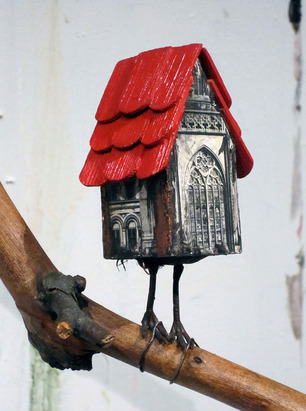
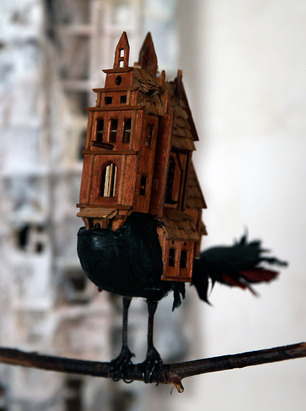
This isn’t Hochbaum’s first smaller work in a limited edition run. “I don’t do prints. I do unique,” he notes. In 2012, the artist released his first range sold exclusively on his website. “I’ve done these installations with birds. Over the years it’s accumulated to thousands and thousands of birds. I began using parts of the bird art for other projects.” It was then he got the idea for Baba Yaga houses, where he utilized bird legs. Once again exploring the territory of house and home, this time he applied the supernatural. Baba Yaga is a Russian folk character, a witch of sorts who lives in an intricate home situated atop two chicken legs.
In the process of creating 111 Baba Yaga houses, Hochbaum utilized tin cans as a means of shipment. “Every once in a while I was getting soup and I started saving the cans. The Baba Yaga houses, they’re delicate. I thought, I’ve never seen somebody shipping a can but this will last. The object will be fine.” While making his tiny houses over this last year, it dawned on him that the cans would no longer be a method of shipping, but part of the piece. “Village in a Can” was created.

“I am obsessed with the things of dreams,” Hochbaum says. This is evident in his work, where fantasy entwines structure. “Usually the most organic and haphazard things,” he concludes, “eventually over the years become something special. For a moment’s release of satisfaction or reaching of a clarity or connecting the dots, you work for hours. And then other people react.” What holds true of his gallery represented, globally shown work also appears in his tiny houses. It’s most likely because the same sensitive, attention to detail appears in both.
Hochbaum also maintains a blog where you can keep track of his work and things that he finds inspirational. David Hochbaum’s “Village in a Can” are available for $25 from the artist’s website.
Images courtesy of David Hochbaum

